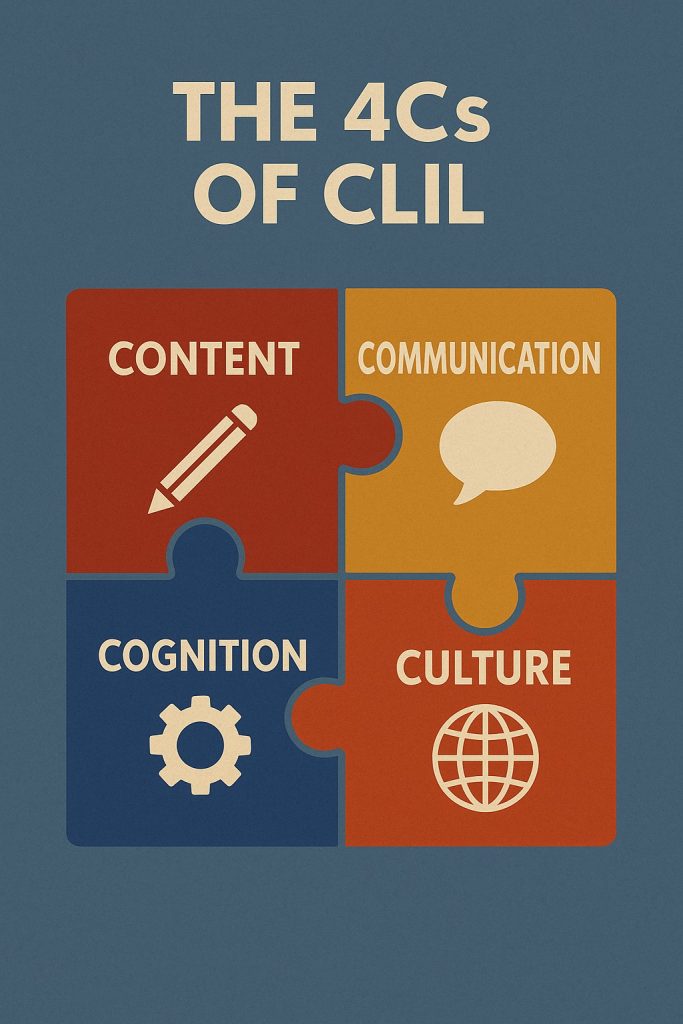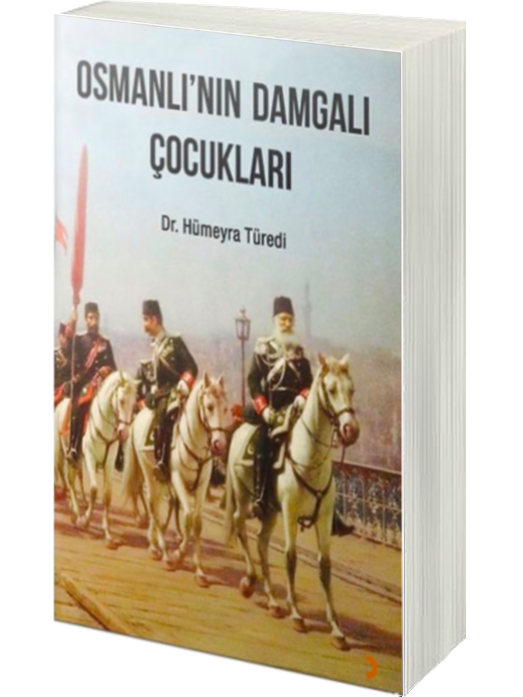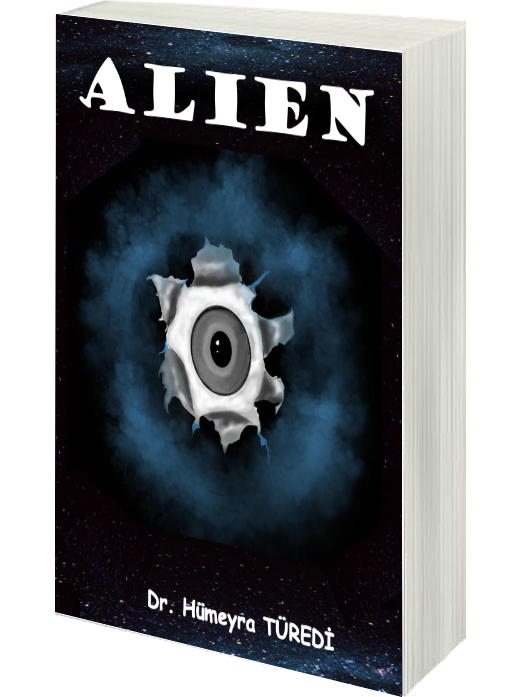
The CLIL approach is more than just teaching a subject in a foreign language. At its core, it is built upon four fundamental principles that shape how students engage with both language and content. These principles are known as the 4Cs: Content, Communication, Cognition, and Culture. Each of these components contributes to the development of well-rounded learners who are not only linguistically capable but also academically and socially competent.
Content, quite simply, is the subject matter students need to grasp — whether it’s science, geography, or even history. But unlike a regular lesson, here they tackle it through another language, which makes learning more layered and, I’d say, more rewarding. However, unlike traditional subject teaching, CLIL encourages the use of the target language as a medium of instruction, making content learning and language acquisition simultaneous processes.
Communication is the second pillar of CLIL and emphasizes the role of language as a tool for learning and interaction. Students don’t just memorize vocabulary; they’re encouraged to really use the language — to ask questions, share ideas, even debate a topic with their classmates. This is when the language truly comes alive. Through this process, language is acquired naturally, within meaningful and purposeful contexts.
Cognition in CLIL refers to the development of thinking skills. As students explore subject content through a new language, they are also challenged to analyze, evaluate, and apply knowledge. This encourages higher-order thinking, promoting intellectual growth alongside linguistic improvement. CLIL lessons are designed not only to deliver information but also to stimulate students’ reasoning and problem-solving abilities.
And what happens when students think in two directions at once — content and language? They develop sharper thinking skills. CLIL lessons push them to analyse, evaluate and solve problems, all while expanding their language ability
Culture, or community, completes the 4Cs model by introducing a global dimension to learning. CLIL provides students with opportunities to connect the content they are learning with cultural contexts. This fosters intercultural understanding, helps learners appreciate diversity, and prepares them to participate in a globalized society. A geography lesson about rivers can easily open the door to discuss how different cultures settle near water, or how climate shapes local traditions. In this way, CLIL makes students see the bigger picture.
Together, the 4Cs framework makes CLIL a dynamic and multidimensional approach to education. It ensures that learning is not confined to language drills or content memorization. Instead, it integrates language, knowledge, thought, and cultural awareness into a single, coherent educational experience. This is exactly what makes CLIL more than a method — it’s a powerful mindset for 21st-century classrooms
References
- Coyle, D., Hood, P., & Marsh, D. (2010). CLIL: Content and Language Integrated Learning. Cambridge University Press.
- Mehisto, P., Marsh, D., & Frigols, M. J. (2008). Uncovering CLIL: Content and Language Integrated Learning in Bilingual and Multilingual Education. Macmillan.
- Bentley, K. (2010). The TKT Course CLIL Module. Cambridge University Press.
You can read the Turkish version of the article below.
CLIL’in 4C Modeli: Bütünleşik Öğrenmenin Temel Dinamikleri
CLIL yaklaşımı yalnızca bir dersi yabancı dilde öğretmekten ibaret değildir. Bu yaklaşım, öğrencilerin hem dili hem de içeriği bütünsel bir biçimde öğrenmesini sağlayan dört temel ilke üzerine inşa edilmiştir. Bu ilkeler, içerik (Content), iletişim (Communication), biliş (Cognition) ve kültür (Culture) olarak adlandırılan 4C modelidir. Her bir bileşen, öğrencilerin yalnızca dilsel değil, aynı zamanda akademik ve sosyal açıdan da donanımlı bireyler olarak yetişmesine katkıda bulunur.
İçerik, öğrencilerin öğrenmesi gereken konu bilgisidir — bu bir fen dersi olabilir, coğrafya ya da tarih de. Ancak CLIL derslerinde bu içerik, hedef dil aracılığıyla sunulur. Böylece öğrenciler hem konuyu öğrenir hem de dili aktif olarak kullanır. Geleneksel ders anlatımından farklı olarak, CLIL’de dil yalnızca bir iletişim aracı değil, aynı zamanda bir öğrenme aracıdır. İçerik ve dil, eşzamanlı olarak öğrenilir.
İletişim, CLIL’in ikinci temel taşıdır. Bu ilke, dili ezberlemenin ötesinde, etkileşim ve anlamlı kullanım bağlamında ele alır. Öğrenciler yalnızca kelime listelerini ezberlemez; soru sorar, fikir paylaşır, tartışmalara katılırlar. Bu süreçte dil, doğal bağlamlarda edinilir. Dilin canlı, dinamik ve işlevsel yönü bu aşamada öne çıkar.
CLIL, sadece bilgi aktarmayı değil, aynı zamanda öğrencilerin düşünme becerilerini geliştirmeyi hedefler. Öğrenciler yeni bir dilde içerik öğrenirken aynı zamanda analiz etme, değerlendirme ve uygulama becerileri kazanırlar. Bu da onları daha üst düzey düşünmeye teşvik eder. CLIL dersleri yalnızca bilgi sunmaz; öğrencilerin muhakeme etmesini, sorun çözmesini ve düşünmesini sağlar.
İçerikle dili aynı anda işlerken, öğrenciler iki yönlü düşünmeye alışır. Bu da hem bilişsel gelişimlerini hızlandırır hem de dil yeterliliklerini pekiştirir.
Modelin son ayağı olan kültür (ya da topluluk), öğrenmeye küresel bir perspektif katar. CLIL dersleri, içeriği kültürel bağlamlarla ilişkilendirme fırsatı sunar. Bu da öğrencilerde kültürlerarası farkındalık yaratır, çeşitliliğe saygı duymayı öğretir ve onları küreselleşen dünyaya hazırlar. Örneğin, bir coğrafya dersinde nehirler konusu işlenirken farklı kültürlerin su kenarlarında nasıl yerleştiği ya da iklimin gelenekleri nasıl şekillendirdiği tartışılabilir. Böylece öğrenciler, sadece dersi değil, dünyanın işleyişini de öğrenmiş olurlar.
4C modeli, CLIL’i yalnızca bir öğretim yöntemi olmaktan çıkarıp çok boyutlu ve bütünsel bir eğitim yaklaşımı haline getirir. Dil ezberi ya da içerik tekrarının ötesinde, bilgi, dil, düşünce ve kültürel farkındalığı entegre eden bir öğrenme deneyimi sunar. İşte bu yüzden CLIL, yalnızca bir yöntem değil, 21. yüzyıl sınıfları için güçlü bir bakış açısıdır.
Dr. Hümeyra Türedi
Kaynakça
Coyle, D., Hood, P., & Marsh, D. (2010). CLIL: Content and Language Integrated Learning. Cambridge University Press.
Mehisto, P., Marsh, D., & Frigols, M. J. (2008). Uncovering CLIL: Content and Language Integrated Learning in Bilingual and Multilingual Education. Macmillan.
Bentley, K. (2010). The TKT Course CLIL Module. Cambridge University Press.



